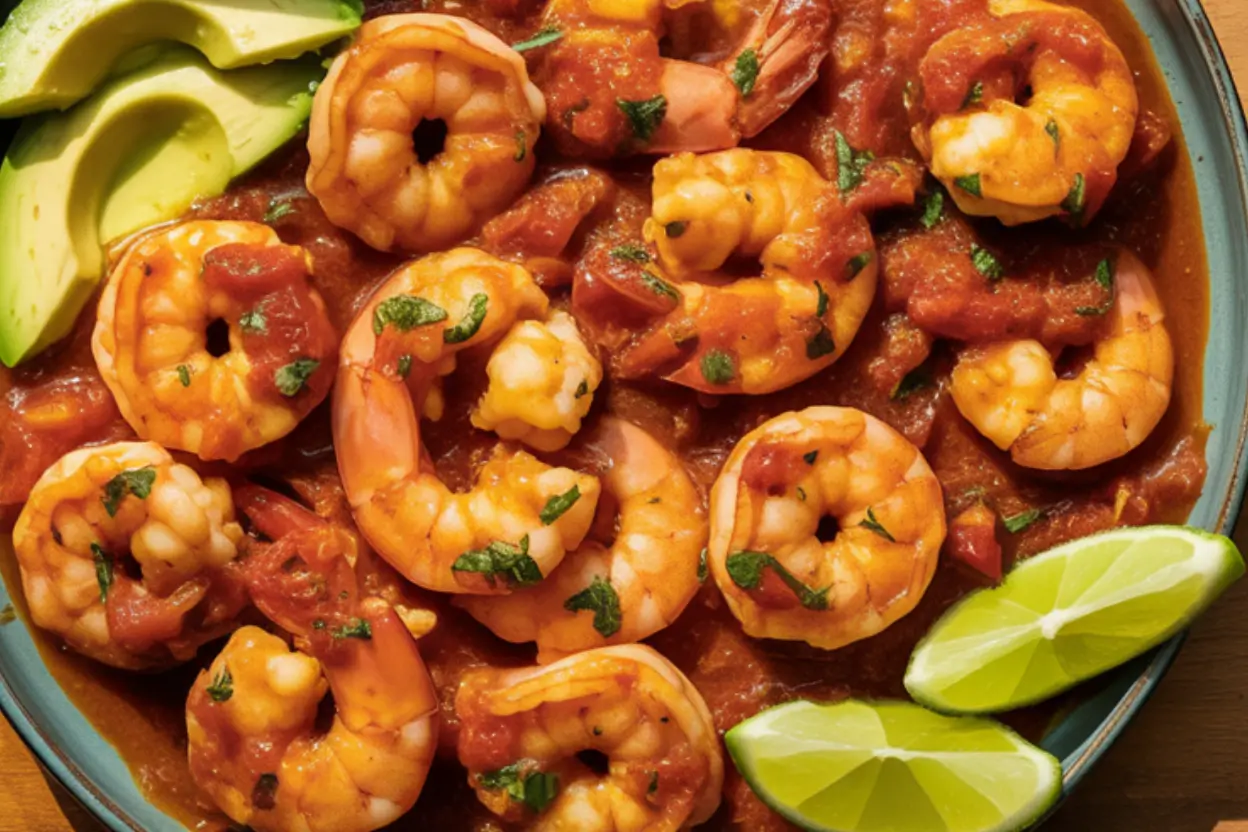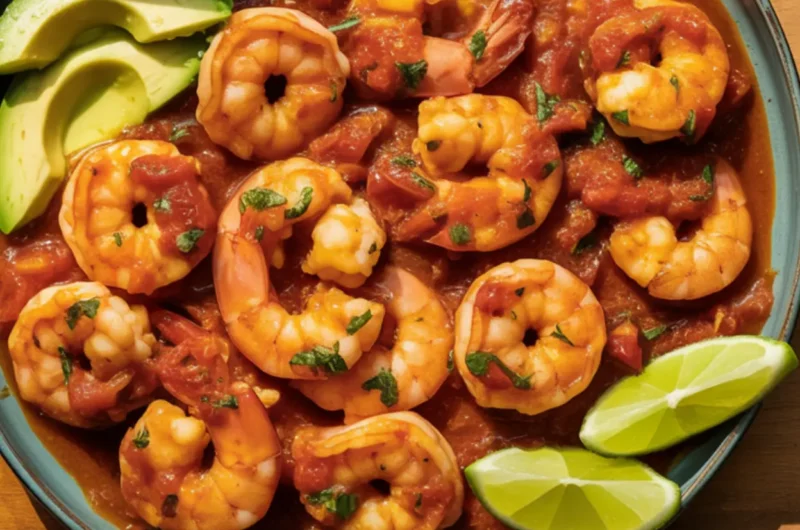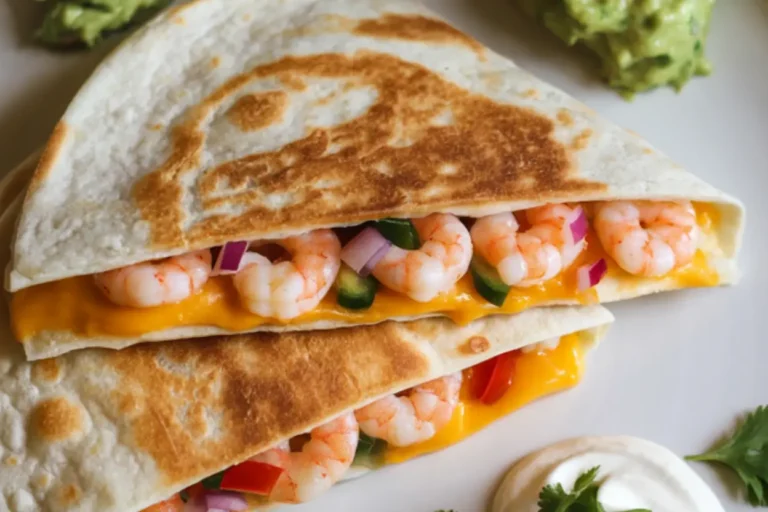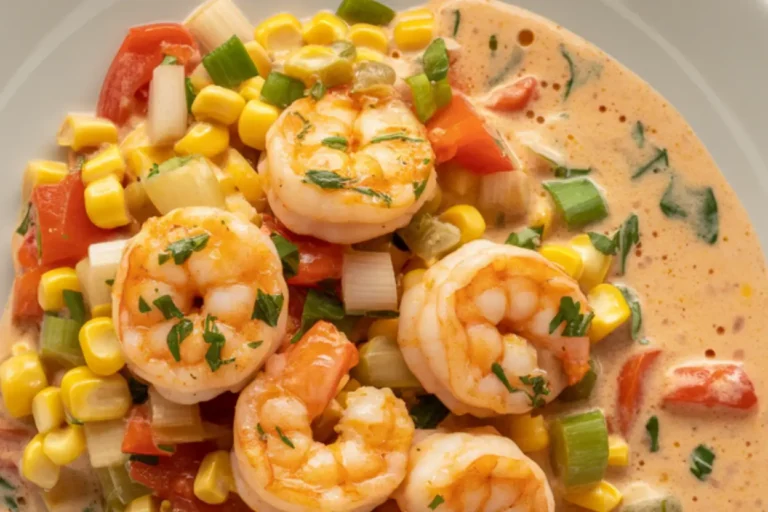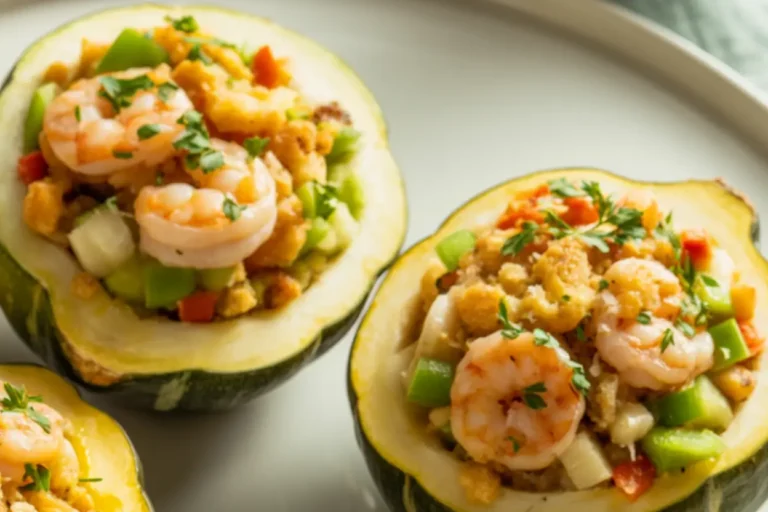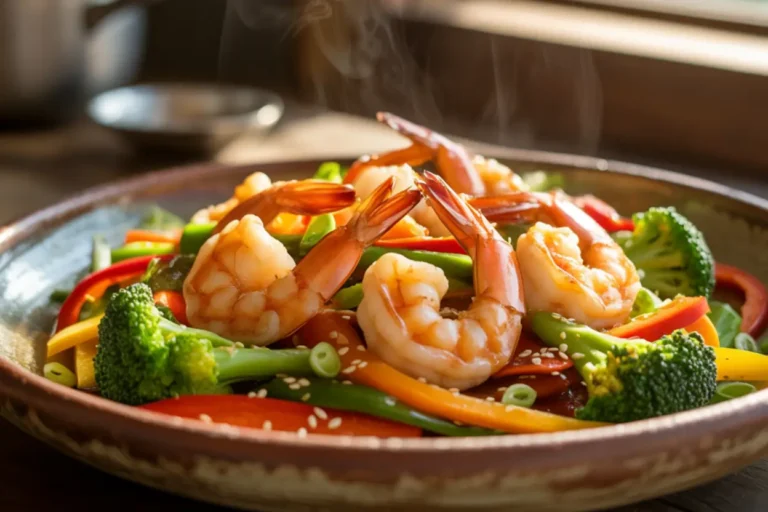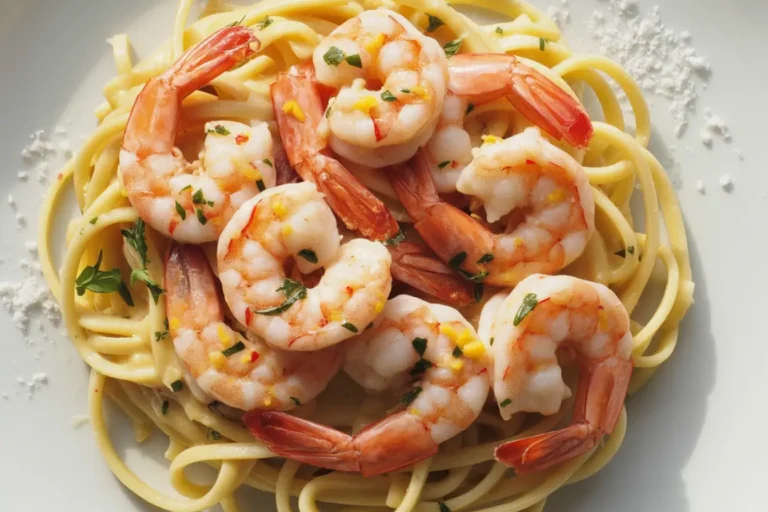Camarones à la Diabla: How to Balance Spice and Flavor
Table of Contents
There’s something undeniably thrilling about a perfectly executed plate of Camarones à la Diabla. This fiery Mexican shrimp dish—whose name literally translates to “Devil’s Shrimp”—delivers an intoxicating combination of succulent seafood and bold, complex heat that has made it a standout favorite at Mexican restaurants worldwide. But making this dish at home often intimidates even experienced cooks who worry about striking the right balance between heat and flavor.
Thank you for reading this post, don't forget to subscribe!As someone who’s spent years perfecting this classic recipe, I can tell you that the secret lies not in maximum spiciness, but in building layers of flavor alongside the heat. When done right, Camarones à la Diabla should certainly pack a punch, but it should never be one-dimensionally spicy. Instead, it should deliver a deep, complex sauce where the chile heat enhances, rather than overwhelms, the natural sweetness of the shrimp.
Today, I’m sharing my carefully tested recipe that will help you create restaurant-quality Camarones à la Diabla in your own kitchen, with a perfectly balanced sauce that will have everyone asking for seconds. Let’s dive in!
How to Make Camarones à la Diabla
Quick Overview
Camarones à la Diabla showcases plump, juicy shrimp bathed in a vibrant, deep red sauce that delivers a multilayered heat experience. What makes this dish special isn’t just its spiciness, but how the sauce balances multiple chile varieties with aromatic vegetables, fresh herbs, and a touch of tomato for complexity and depth. The result is a dish that tingles the taste buds while offering nuanced flavor beyond mere heat.
What I love about this recipe is how impressive it seems despite being relatively straightforward to prepare. The sauce comes together in stages that build flavor, while the shrimp cooks quickly at the end to ensure it remains perfectly tender. From start to finish, you’re looking at about 40 minutes total, with approximately 25 minutes of active cooking time. The remainder is mostly dedicated to soaking dried chiles and occasional stirring, making this an achievable weeknight meal that tastes like you spent hours in the kitchen.
The versatile sauce also works beautifully with other proteins like chicken or firm white fish, making this technique valuable for any home cook’s repertoire.
The Ingredients I Use to Bring My Camarones à la Diabla to Life
For the Chile Sauce:
- 4 dried guajillo chiles, stems and seeds removed
- 2 dried ancho chiles, stems and seeds removed
- 2-3 dried arbol chiles (adjust according to heat preference), stems removed
- 2 cups hot water (for soaking chiles)
- 1 tablespoon olive oil
- 1 medium white onion, diced (about 1 cup)
- 4 garlic cloves, minced
- 1 teaspoon dried oregano (preferably Mexican)
- ½ teaspoon ground cumin
- 1 can (14.5 oz) fire-roasted diced tomatoes
- 1 tablespoon tomato paste
- 1 teaspoon brown sugar
- 1 cup vegetable or chicken broth
- 1 tablespoon fresh lime juice
- Salt to taste
For the Shrimp:
- 2 pounds large shrimp (21-25 count), peeled and deveined, tails left on if desired
- 2 tablespoons olive oil
- ½ teaspoon salt
- ¼ teaspoon freshly ground black pepper
- ¼ teaspoon garlic powder
For Garnish:
- ¼ cup fresh cilantro, chopped
- 1 lime, cut into wedges
- 1 avocado, sliced (optional)
- Crema mexicana or sour cream for drizzling (optional, helps balance the heat)
Step-by-Step Instructions
Preparing the Chile Sauce
- Prepare the dried chiles: Use kitchen scissors to cut open the guajillo and ancho chiles lengthwise. Remove and discard the stems and seeds (wear gloves to protect your hands). For the arbol chiles, simply remove the stems if you want maximum heat, or remove the seeds for a slightly milder sauce.
- Toast the chiles: Heat a large dry skillet over medium heat. Add the prepared chiles and toast them for 1-2 minutes, turning frequently, until they become fragrant and slightly pliable. Be careful not to burn them, as this will create bitter flavors.
- Soak the chiles: Transfer the toasted chiles to a medium bowl and cover with 2 cups of hot water. Place a small plate or bowl on top to keep them submerged, and let them soak for 20 minutes until soft and pliable.
- Sauté aromatics: While the chiles soak, heat 1 tablespoon of olive oil in a large skillet over medium heat. Add the diced onion and sauté for 4–5 minutes until it becomes soft and translucent. Stir in the minced garlic, oregano, and cumin, and cook for another 30 seconds until aromatic.
- Add tomatoes: Stir in the fire-roasted diced tomatoes with their juice and tomato paste. Cook for 3-4 minutes, allowing the mixture to thicken slightly.
- Blend the sauce: Drain the soaked chiles, reserving ½ cup of the soaking liquid. Transfer the chile-tomato mixture to a blender. Add the soaked chiles, reserved soaking liquid, and brown sugar. Blend until completely smooth, about 1-2 minutes. If needed, add a little more of the soaking liquid to achieve a smooth, pourable consistency.
- Strain for smoothness (optional): For a silkier texture, strain the sauce through a fine-mesh sieve back into the skillet, pressing with a spatula to extract all the flavor. This step removes any tough chile skins that didn’t fully puree.
- Simmer the sauce: Return the strained sauce to medium-low heat, add the broth, and simmer for 10-15 minutes, stirring occasionally, until the sauce has thickened slightly and the flavors have melded. The sauce should be thick enough to coat the back of a spoon while remaining pourable.
- Finish with acid: Stir in the lime juice and season with salt to taste (usually about 1 teaspoon, but adjust according to your preference). The lime juice brightens the flavor and helps balance the heat.
Cooking the Shrimp
- Prepare the shrimp: Pat the shrimp completely dry with paper towels. In a bowl, toss the shrimp with ½ teaspoon salt, ¼ teaspoon black pepper, and ¼ teaspoon garlic powder until evenly coated.
- Sear the shrimp: In a separate large skillet, heat 2 tablespoons of olive oil over medium-high heat until shimmering. Add the shrimp in a single layer (working in batches if necessary to avoid overcrowding). Cook for approximately 2 minutes on the first side until they begin to turn pink and slightly golden.
- Flip and cook briefly: Flip the shrimp and cook for just 1 more minute on the second side. The shrimp should be mostly pink but still slightly translucent in the center.
- Combine with sauce: Reduce heat to low and pour the prepared chile sauce over the shrimp. Simmer gently for just 1-2 minutes until the shrimp are fully cooked but still tender. Be careful not to overcook the shrimp, as they will become tough.
Serving
- Garnish and serve: Transfer the Camarones à la Diabla to a serving dish or individual plates. Garnish generously with fresh chopped cilantro, lime wedges, and sliced avocado if using. For those sensitive to heat, offer drizzles of Mexican crema or sour cream on the side.
What to Serve Camarones à la Diabla With
This bold, flavorful dish pairs beautifully with several complementary sides:
- Mexican rice: The mild, slightly tomato-flavored rice provides the perfect canvas for soaking up the spicy sauce. The contrast of temperatures and textures works beautifully.
- Warm corn tortillas: Essential for creating impromptu tacos with the saucy shrimp, or for sopping up the delicious sauce.
- Cilantro-lime rice: A bright, citrusy rice provides a refreshing counterpoint to the heat of the dish.
- Simple black beans: Seasoned with a touch of cumin and garlic, these provide a hearty accompaniment and help temper the spice.
- Cooling sides: A simple avocado salad, cucumber slices with lime, or a crisp cabbage slaw can provide welcome relief from the heat.
- Beverage pairings: A cold Mexican lager, a sweet-tart margarita, or horchata all complement the spiciness beautifully. For non-alcoholic options, try agua fresca, particularly cucumber or hibiscus varieties.
- Complete meal idea: Serve Camarones à la Diabla as part of a Mexican feast with rice, beans, warm tortillas, fresh guacamole, and cooling crema for a memorable dinner party.
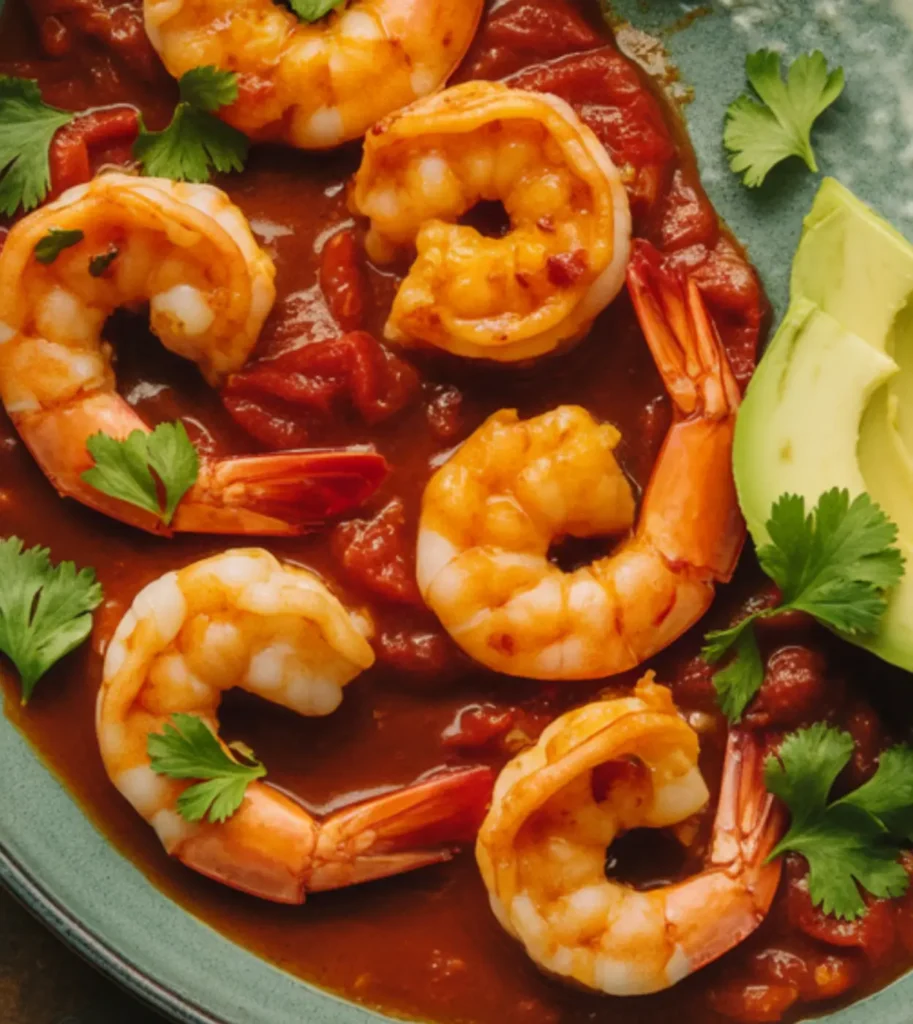
Top Tips for Perfecting Camarones à la Diabla
- Chile selection is key: The holy trinity of guajillo, ancho, and arbol provides the ideal balance of flavor and heat. Guajillos offer fruity notes and moderate spice, anchos contribute earthy, raisin-like flavors, and arbols bring the serious heat. Adjust the ratio to your preference.
- Don’t skip the toasting: Briefly toasting the dried chiles wakes up their flavors and adds depth to the final sauce. Just be vigilant—burned chiles will make your sauce bitter and unpleasant.
- Shrimp timing is critical: The most common mistake is overcooking the shrimp. They need very little time—just until they turn pink and opaque. Remember that they’ll continue cooking slightly in the hot sauce after you remove them from the heat.
- Watch for chile heat variations: Chile peppers can vary dramatically in heat level based on growing conditions. If your sauce turns out spicier than intended, add a touch more tomato paste and a squeeze of honey to balance the heat.
- Shell-on technique: For extra flavor in the dish, consider cooking the shrimp with shells on and removing them just before eating. This provides more flavor, though it does make the dish messier to eat.
- Sauce consistency matters: The perfect sauce should be thick enough to cling to the shrimp, yet fluid enough to spread around them on the plate. If it’s too thick, add a splash of broth; if too thin, let it simmer a little longer.
- Prep ahead option: The sauce can be made up to 3 days in advance and stored in the refrigerator, making dinner assembly extremely quick. Just reheat the sauce and cook the shrimp fresh when ready to serve.
- Heat level management: For a milder version that still delivers authentic flavor, remove all seeds from the chiles and reduce the number of arbol chiles. For extra heat, include some of the seeds or add a fresh jalapeño to the sauce.
- Shrimp size consideration: While any size shrimp will work, larger shrimp (21-25 or 16-20 count per pound) stand up better to the bold sauce and are less likely to overcook.
- Acid is essential: Don’t skip the lime juice at the end—it brightens the entire dish and helps balance the richness and heat of the sauce.
Storing and Reheating Tips
Separate Storage for Best Results:
- For optimal quality, store the sauce and shrimp separately when possible. This prevents the shrimp from continuing to “cook” in the acidic sauce and becoming tough.
- If already combined, transfer to an airtight container and refrigerate promptly.
Refrigeration Guidelines:
- Properly stored, Camarones à la Diabla will keep in the refrigerator for up to 3 days.
- The sauce alone (without shrimp) can be refrigerated for up to 5 days, making it great for meal prep.
- Store in glass containers rather than plastic when possible, as the sauce can stain plastic and may absorb plastic odors.
Freezing Options:
- The chile sauce freezes exceptionally well for up to 3 months. Store it in freezer-safe containers or use ice cube trays for easy portioning.
- I don’t recommend freezing the cooked shrimp in the sauce, as the texture will suffer significantly upon thawing.
- If you must freeze the complete dish, use it within 1 month, and be aware that the shrimp texture will be somewhat compromised.
Reheating Methods:
- Stovetop (Preferred Method):
- For separately stored components: Gently reheat the sauce in a skillet over medium-low heat until simmering. Meanwhile, in a separate pan, quickly warm the shrimp with a touch of oil just until heated through (1-2 minutes). Combine just before serving.
- For combined storage: Reheat in a skillet over medium-low heat, stirring occasionally until just warmed through. Avoid bringing to a boil or extended heating, which will toughen the shrimp.
- Microwave (Quick Option):
- Use 50% power in 30-second intervals, stirring between each interval.
- Place a damp paper towel over the container to help retain moisture.
- Be very careful not to overheat, as this will make the shrimp rubbery.
Refreshing Leftovers:
- After reheating, add a fresh squeeze of lime juice to enhance and brighten the flavors.
- Garnish with newly chopped cilantro to add a fresh element.
- A drizzle of olive oil on top after reheating can help revive the richness of the dish.
Creative Uses for Leftover Sauce:
- If you have leftover sauce without shrimp, it’s incredibly versatile:
- Use as a marinade for chicken or fish
- Stir into scrambled eggs for a spicy breakfast
- Add to soups or stews for instant depth and heat
- Mix with mayo for a spicy sandwich spread
Mastering Camarones à la Diabla is truly about understanding the balance between bold spice and nuanced flavor. This dish should certainly live up to its devilish name, but the heat should enhance rather than overpower the natural sweetness of the shrimp. With this detailed recipe and techniques, you’ll be able to create a restaurant-quality dish that delivers complex flavors alongside its signature spicy kick.
The next time you’re craving something with a bit of excitement, skip the restaurant and try making this spectacular dish at home. Your taste buds—and impressed dinner guests—will thank you for taking the time to build flavors the right way. ¡Buen provecho!
Camarones à la Diabla: How to Balance Spice and Flavor
Cuisine: MexicanDifficulty: Intermediate4
servings20
minutes25
minutes375–425
kcalCamarones a la Diabla is a bold and fiery Mexican dish featuring tender shrimp smothered in a smoky, spicy red chile sauce made from dried guajillo, ancho, and arbol chiles. Balanced with tomato, garlic, and a splash of lime, the result is a rich, vibrant flavor with just the right amount of heat. It’s traditionally served with rice, tortillas, or avocado and crema to cool the spice.
Ingredients
4 dried guajillo chiles, stems and seeds removed
2 dried ancho chiles, stems and seeds removed
2-3 dried arbol chiles (adjust according to heat preference), stems removed
2 cups hot water (for soaking chiles)
1 tablespoon olive oil
1 medium white onion, diced (about 1 cup)
4 garlic cloves, minced
1 teaspoon dried oregano (preferably Mexican)
½ teaspoon ground cumin
1 can (14.5 oz) fire-roasted diced tomatoes
1 tablespoon tomato paste
1 teaspoon brown sugar
1 cup vegetable or chicken broth
1 tablespoon fresh lime juice
Salt to taste
2 pounds large shrimp (21-25 count), peeled and deveined, tails left on if desired
2 tablespoons olive oil
½ teaspoon salt
¼ teaspoon freshly ground black pepper
¼ teaspoon garlic powder
¼ cup fresh cilantro, chopped
1 lime, cut into wedges
1 avocado, sliced (optional)
Crema mexicana or sour cream for drizzling (optional, helps balance the heat)
Instructions
- Make the Chile Sauce
Toast guajillo, ancho, and arbol chiles in a dry skillet until fragrant, then soak them in hot water for 20 minutes. Meanwhile, sauté diced onion in olive oil until soft, then add garlic, oregano, and cumin. Stir in fire-roasted tomatoes and tomato paste and cook briefly. Blend this mixture with the soaked chiles, reserved soaking liquid, and brown sugar until smooth. Strain the sauce (optional) and return it to the skillet. Add broth and simmer 10–15 minutes until thickened. Finish with lime juice and salt to taste. - Cook the Shrimp
Pat shrimp dry and season with salt, pepper, and garlic powder. Sear in hot olive oil for 2 minutes on one side, flip, and cook for 1 minute more. Reduce heat, pour in the chile sauce, and simmer for 1–2 minutes until the shrimp are fully cooked and tender. Avoid overcooking. - Plate and Serve
Transfer shrimp and sauce to serving plates. Garnish with chopped cilantro, lime wedges, and sliced avocado (optional). Offer crema or sour cream on the side to balance the heat, if desired.
Notes
- This dish gets its signature heat and deep red color from a blend of dried chiles — guajillo for mild fruitiness, ancho for smoky depth, and arbol for serious heat. Adjust the number of arbol chiles to suit your spice tolerance. Serving it with sliced avocado, lime, and crema not only complements the flavors but also helps mellow the heat for a more balanced bite.

